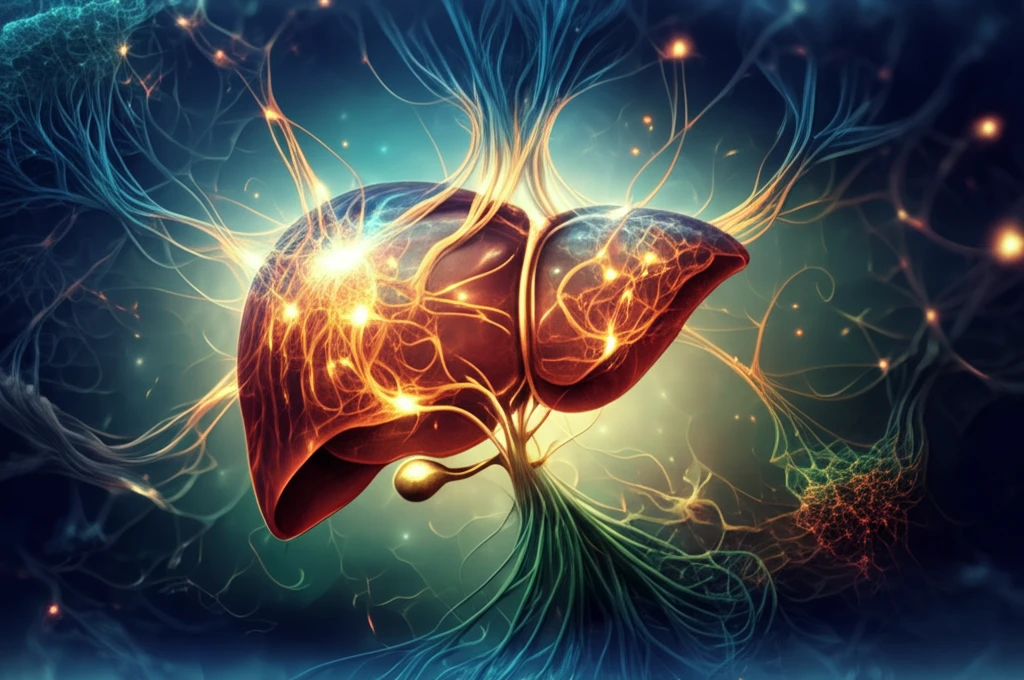
Liver Health Breakthrough: The Hidden Role of IL-17F in Hepatitis C and Liver Disease
"New research spotlights Interleukin-17F as a key player in liver fibrosis and hepatocellular carcinoma (HCC), offering potential for earlier diagnosis and targeted treatments."
Chronic liver diseases, particularly those stemming from hepatitis C virus (HCV) infection, represent a significant global health challenge. While the role of Interleukin-17A (IL-17A) in these conditions has been extensively studied, a closely related molecule, Interleukin-17F (IL-17F), has remained comparatively unexplored. Recent research is shedding light on the importance of IL-17F in the progression of liver fibrosis and hepatocellular carcinoma (HCC), the most common form of liver cancer.
A new study published in Infectious Agents and Cancer has revealed that IL-17F expression is markedly elevated in hepatitis C patients who have developed significant liver fibrosis and HCC. This discovery marks a potential turning point in how we understand, diagnose, and treat these devastating conditions. The study, led by researchers from the National Institute of Infectious Diseases and Vaccinology in Taiwan, highlights IL-17F as a valuable biological marker, possibly even more so than IL-17A, in chronic liver disease progression.
The implications of this research are far-reaching. With approximately 80 million people worldwide living with chronic HCV infection, and with the understanding that severe fibrosis and cirrhosis are key risk factors for HCC, the ability to identify at-risk individuals earlier could save countless lives. This article delves into the specifics of the study, explaining why IL-17F is emerging as a critical factor in the fight against liver disease and what this means for future treatments and diagnostic approaches.
Why IL-17F Matters: Linking Inflammation to Liver Damage

To understand the significance of IL-17F, it’s important to recognize its role in the body’s immune response. Both IL-17A and IL-17F are cytokines, signaling molecules that help regulate inflammation and immunity. They are produced by T helper 17 (Th17) cells, a subset of immune cells that defend against bacterial and fungal infections. However, when these cytokines are overproduced or misdirected, they can contribute to chronic inflammation and tissue damage, as seen in autoimmune diseases and cancer.
- Homology: IL-17F shares a high degree of similarity with IL-17A.
- Function: Both can induce the expression of proinflammatory cytokines and other molecules that drive inflammation.
- Location: Expressed in homodimers or as an IL-17A + F heterodimer to induce expression proinflammatory cytokines, chemokines, antimicrobial peptides, and matrix metalloproteinases in IL-17 receptor-bearing cells.
- Role in Disease: Emerging evidence suggests IL-17F plays a distinct, and possibly more potent, role in liver disease progression than IL-17A.
The Future of Liver Disease Treatment: Targeting IL-17F
The discovery of IL-17F's role in liver fibrosis and HCC opens up new avenues for therapeutic intervention. While current treatments for HCV can effectively eliminate the virus, they don't always reverse existing liver damage. New therapies that specifically target IL-17F could potentially reduce inflammation, slow or reverse fibrosis, and ultimately prevent the development of HCC. Further research is needed to fully elucidate the mechanisms by which IL-17F contributes to liver disease and to develop safe and effective IL-17F-targeted treatments. However, the findings from this study offer hope for improved outcomes for individuals at risk of or living with chronic liver conditions.
